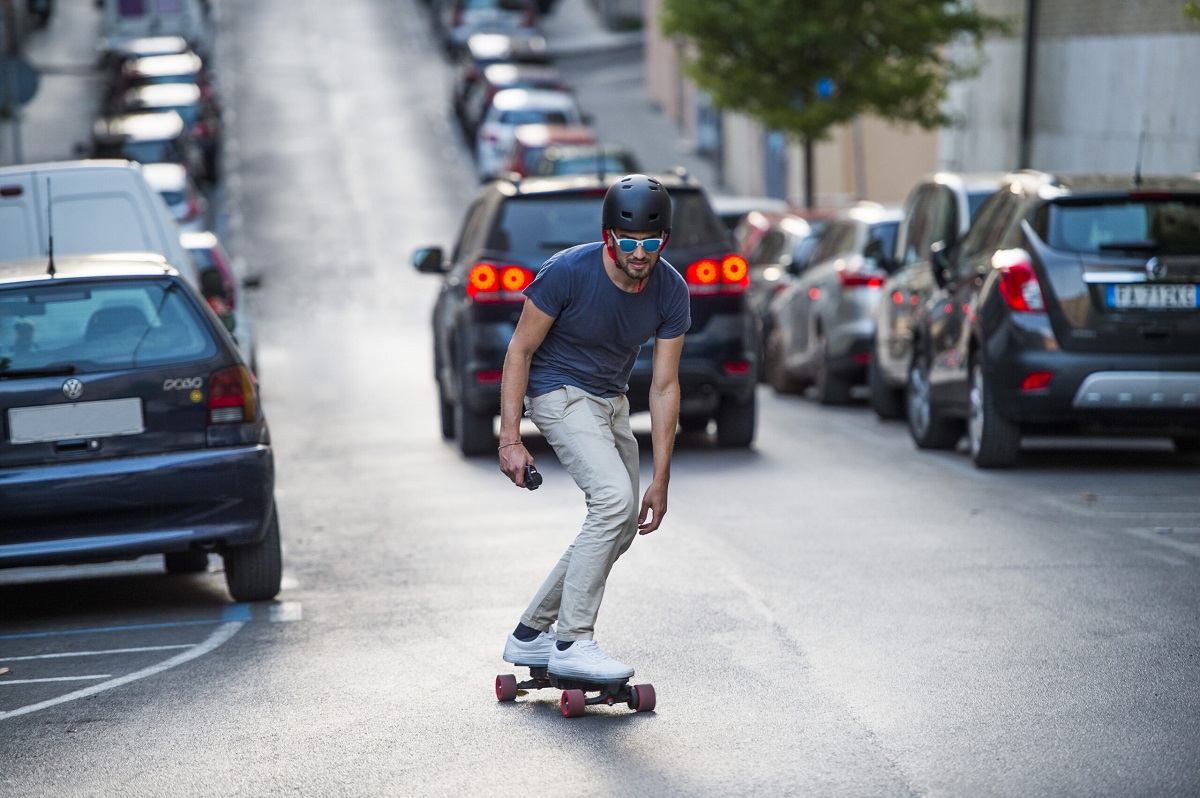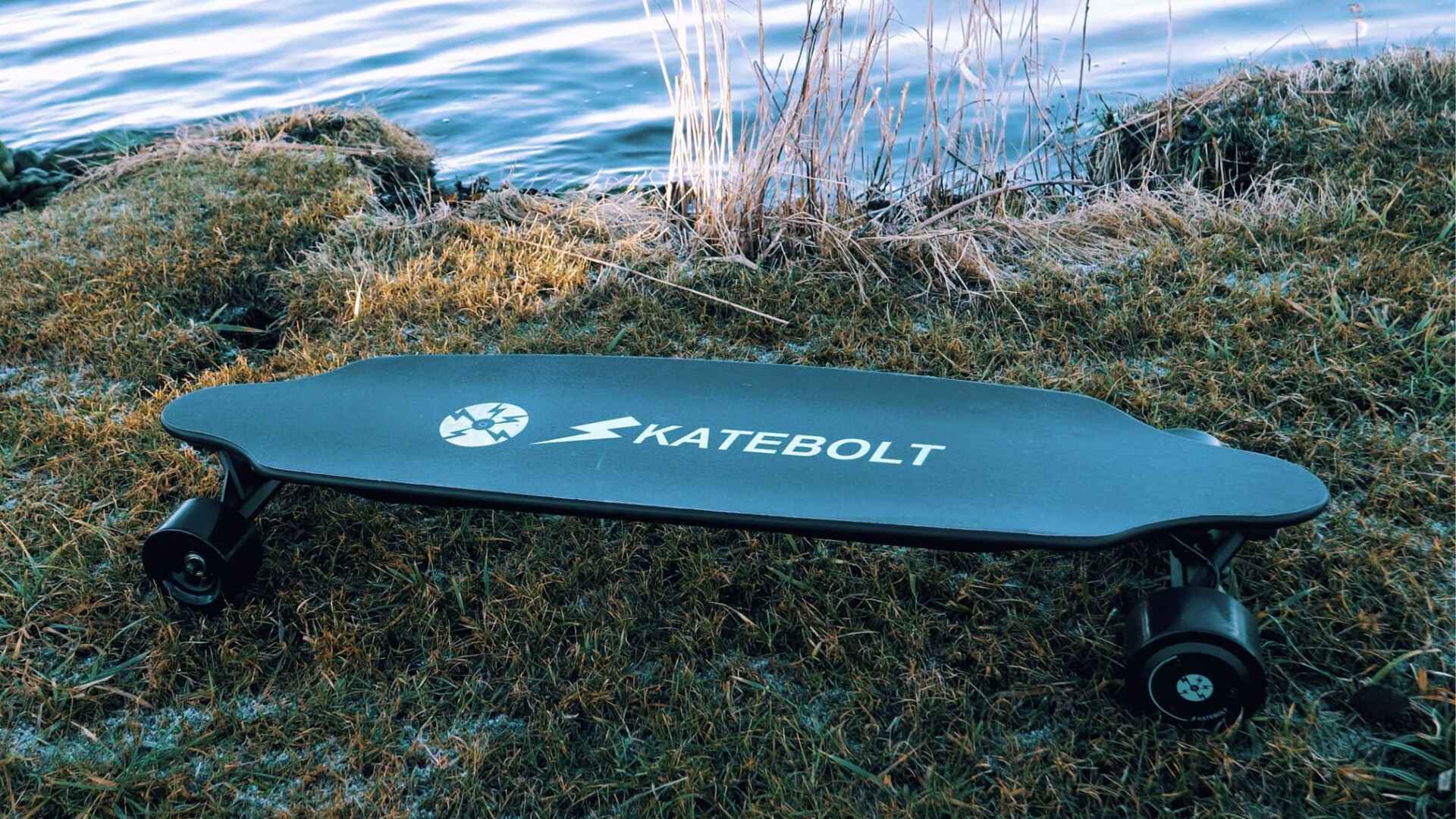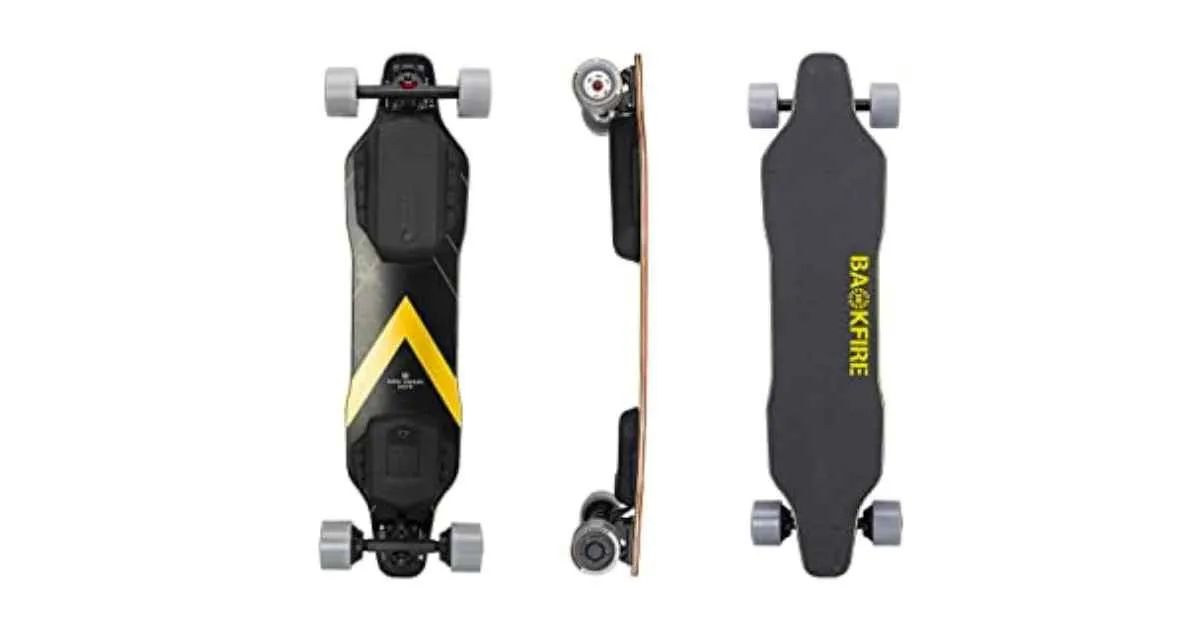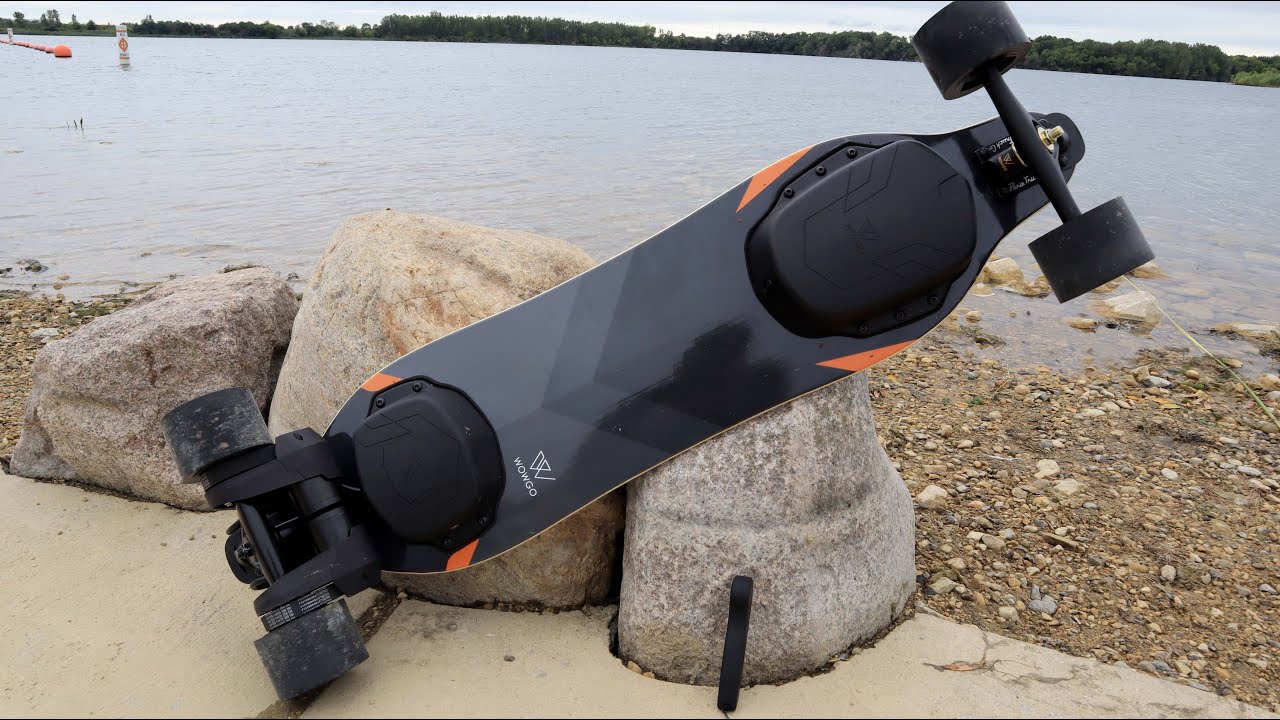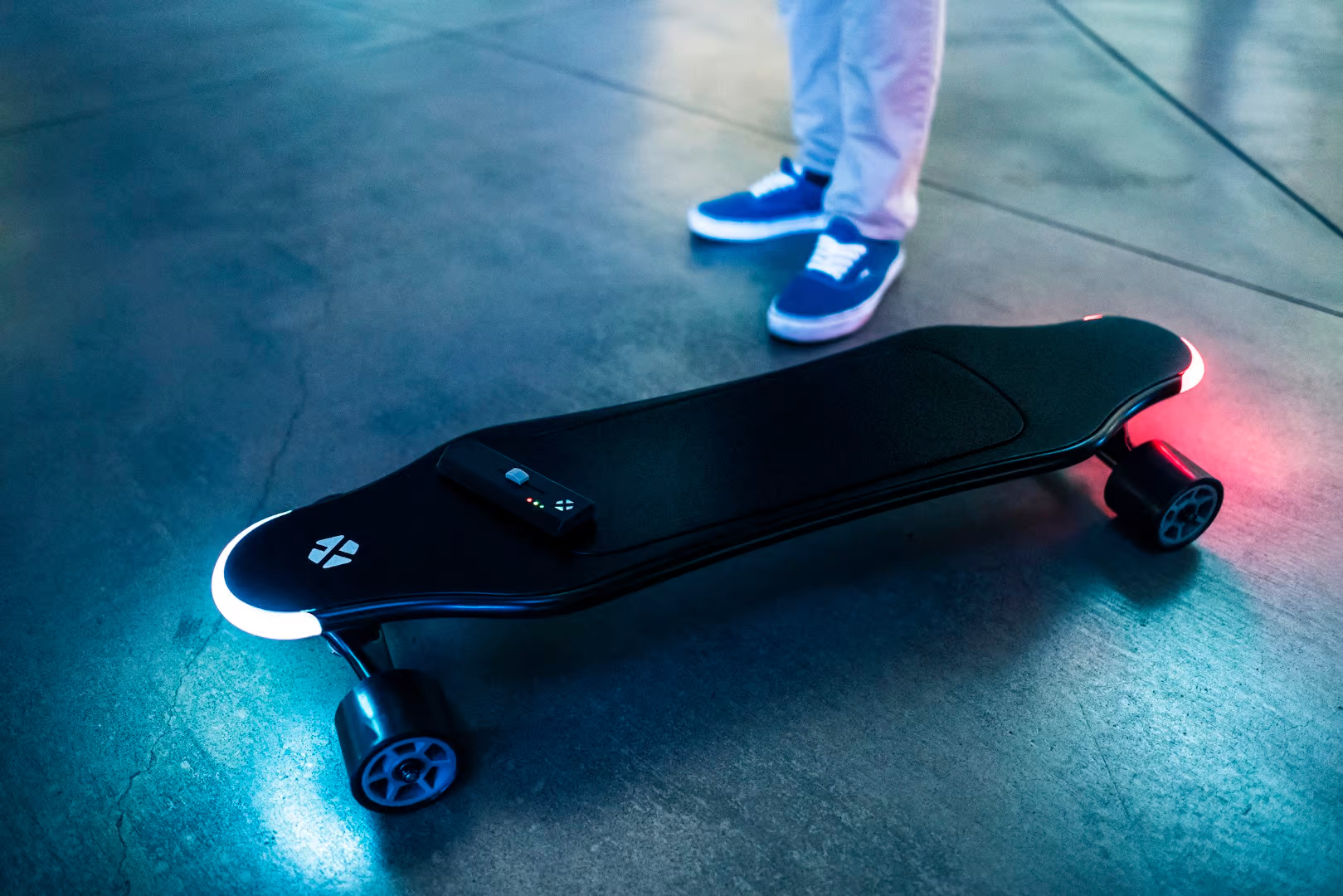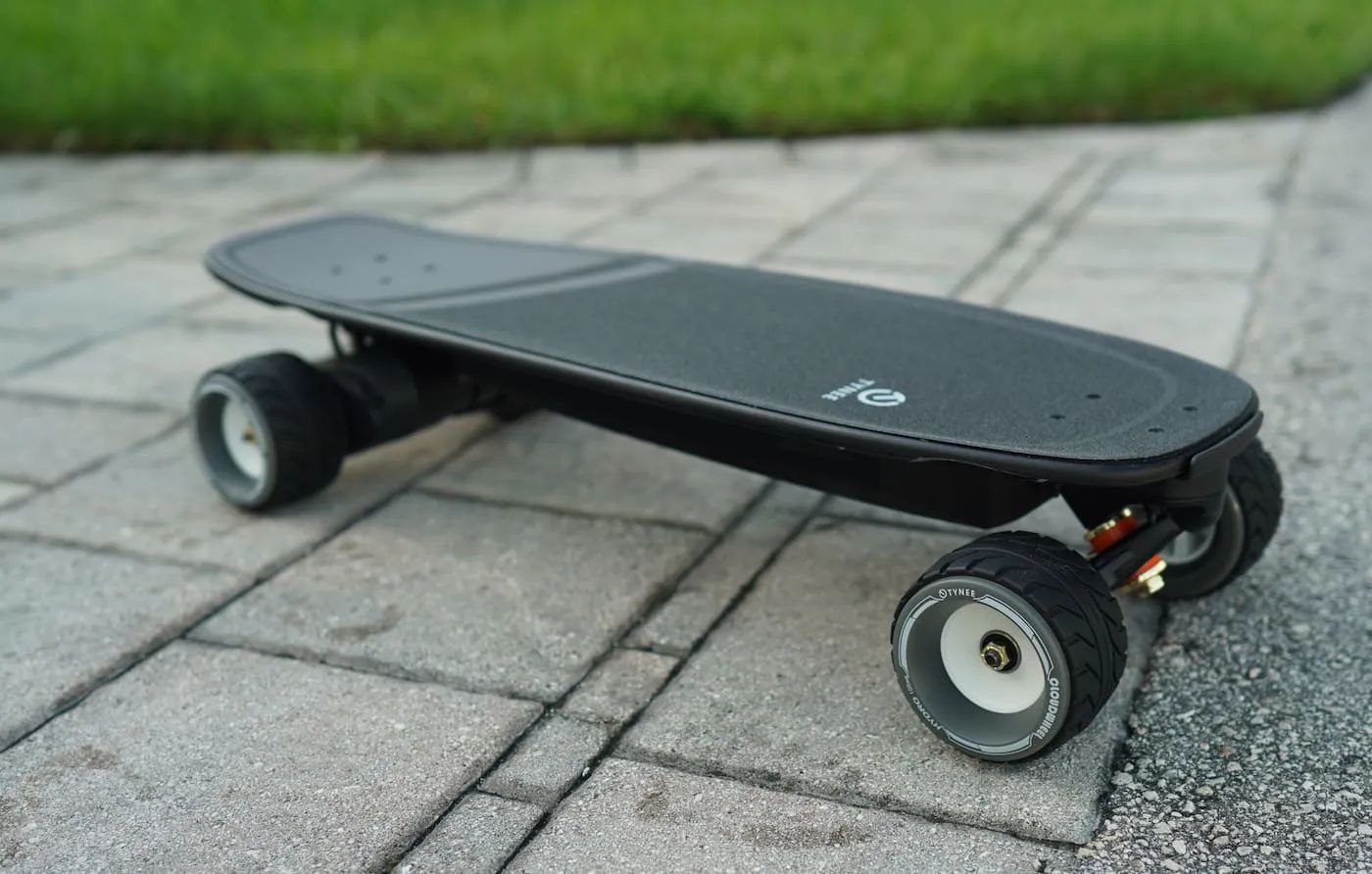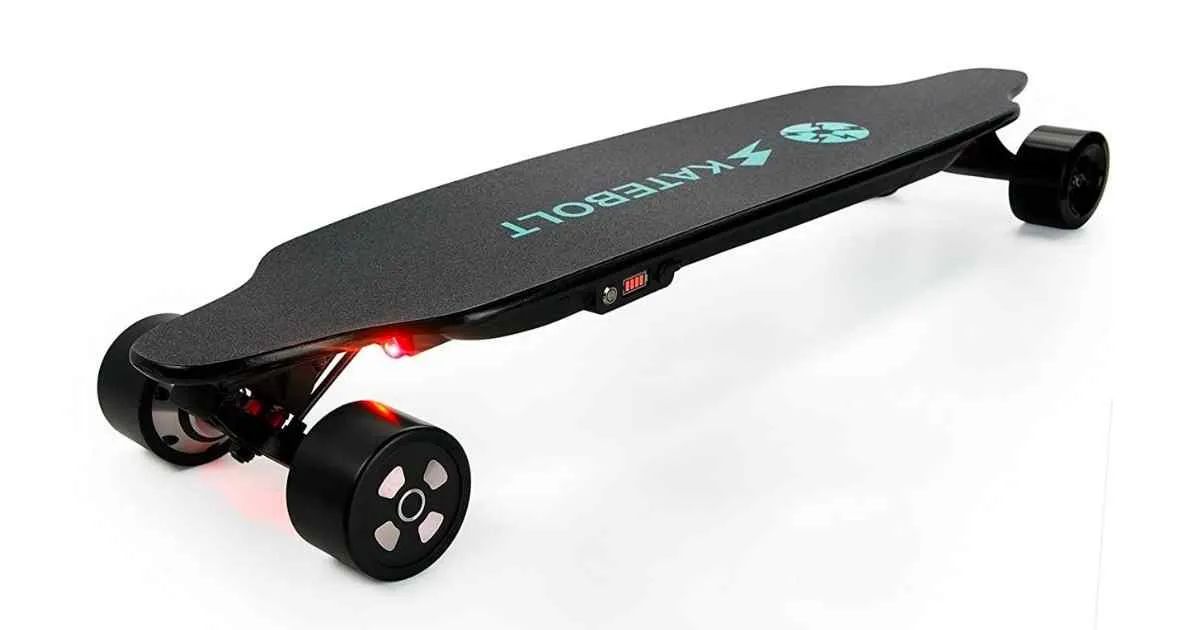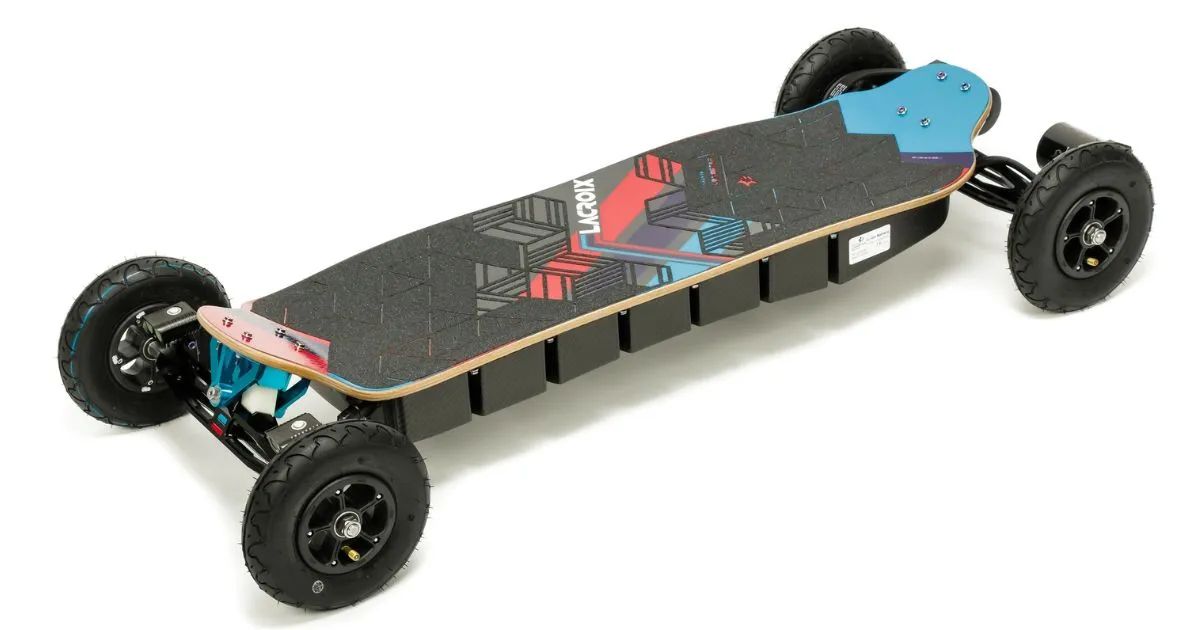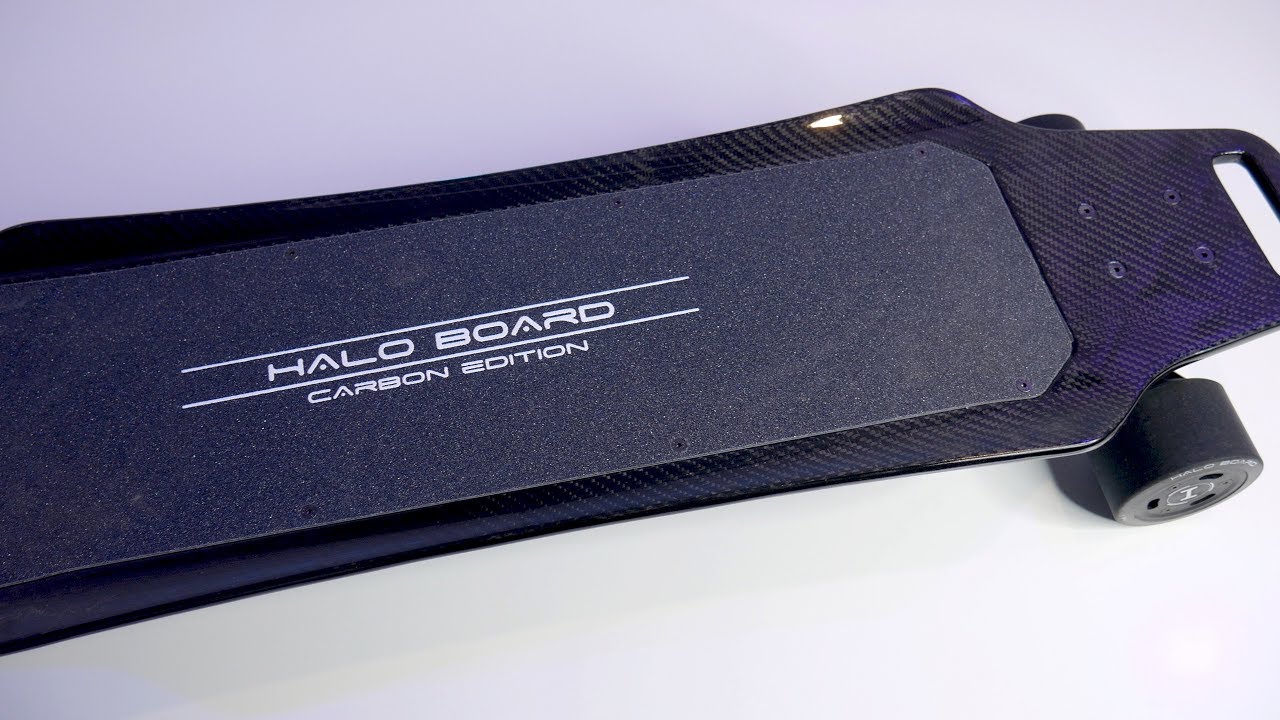Introduction
Electric skateboards have become a popular mode of transportation for short commutes, not only providing a convenient and eco-friendly alternative to traditional methods but also adding an element of fun and excitement to the daily grind. These sleek and efficient devices have revolutionized the way people navigate urban landscapes.
However, when it comes to using an electric skateboard for commuting, one crucial factor to consider is the distance you can travel on a single charge. The range or distance potential of an electric skateboard varies depending on several factors, including battery capacity, terrain, rider weight, speed, and battery conservation techniques.
In this article, we will delve into these factors and provide some tips to help you maximize the distance you can commute on an electric skateboard. With a better understanding of these considerations, you can plan your rides more effectively and ensure that you won’t be left stranded in the middle of your journey.
So, whether you’re a seasoned electric skateboard rider or new to the trend, let’s explore how to make the most of your electric skateboard’s range and enjoy seamless and hassle-free commutes.
Factors that Affect the Distance You Can Commute on an Electric Skateboard
When it comes to estimating the distance you can travel on an electric skateboard, there are several factors that come into play. Understanding these factors will not only help you manage your expectations but also optimize your riding experience. Let’s take a closer look at the key factors that influence the range of an electric skateboard:
Battery Capacity and Range: The battery capacity of an electric skateboard is a significant determinant of the distance it can cover on a single charge. Electric skateboards typically have varying battery sizes, typically measured in watt-hours (Wh) or ampere-hours (Ah). Higher-capacity batteries allow for a longer range, while smaller batteries may limit your distance.
Terrain and Riding Conditions: The type of terrain and riding conditions you encounter on your commute can greatly impact the distance you can travel. Smooth and flat surfaces, like well-maintained roads or bike lanes, are ideal for achieving maximum range. However, hilly terrains, rough surfaces, and strong headwinds can significantly reduce your electric skateboard’s efficiency and range.
Rider Weight and Riding Style: The weight of the rider plays a significant role in determining the distance a skateboard can cover. Heavier riders put more strain on the motor and battery, resulting in reduced range. Additionally, aggressive riding styles, such as frequent acceleration and braking, can drain the battery more quickly, ultimately affecting the total distance covered.
Speed and Acceleration: The speed at which you ride your electric skateboard can impact its range. Riding at higher speeds consumes more battery power and decreases the overall distance you can travel. Similarly, rapid acceleration and frequent braking can lead to decreased efficiency and reduced range.
Battery Management and Conservation: Effective battery management and conservation techniques can greatly impact the distance you can commute on an electric skateboard. These techniques include keeping the battery charged and maintained, avoiding extreme temperature conditions, and employing energy-efficient riding strategies, such as utilizing eco or cruise modes when applicable.
Understanding these factors that affect the distance you can commute on an electric skateboard is essential for managing your rides efficiently. In the following sections, we will delve into each factor and provide practical tips and recommendations to help you make the most of your electric skateboard’s range.
Battery Capacity and Range
One of the primary factors that determine the distance you can commute on an electric skateboard is the battery capacity. The battery capacity is usually measured in watt-hours (Wh) or ampere-hours (Ah) and represents the amount of energy the battery can store.
The higher the battery capacity, the longer the distance you can cover on a single charge. Electric skateboards typically have varying battery sizes, with capacities ranging from around 100Wh to 500Wh or more. It’s important to note that higher-capacity batteries tend to be bulkier and heavier, so you’ll need to consider your preference for range versus portability.
In addition to battery capacity, other factors can also affect the range. For example, the power output of the motor, the efficiency of the motor controller, and the overall energy consumption of the skateboard’s components can also play a role.
It’s important to remember that the advertised range provided by manufacturers is usually an estimate based on ideal conditions. In real-life scenarios, factors such as rider weight, terrain, riding style, and weather conditions can impact the range of your electric skateboard.
If extending your electric skateboard’s range is a priority for your commute, here are some tips to consider:
- Opt for a skateboard with a larger battery capacity, as it will provide a longer range.
- Charge your battery fully before each ride to maximize the available energy.
- Avoid extreme temperature conditions, as they can negatively affect battery performance.
- Maintain the battery by following the manufacturer’s guidelines for storage and regular maintenance.
- Ride in eco or lower power modes when feasible, as they consume less energy and can help extend the range.
- Avoid excessive acceleration or braking, as they can drain the battery more quickly.
By considering these tips and being mindful of your battery capacity, you can better manage your electric skateboard’s range and enjoy longer and more efficient commutes.
Terrain and Riding Conditions
The type of terrain and riding conditions you encounter during your commute can significantly impact the distance you can travel on an electric skateboard. While smooth and flat surfaces offer the most ideal conditions for maximum range, other factors come into play:
Surface Quality: The smoothness and condition of the road or path you ride on can affect your electric skateboard’s efficiency and range. Rough surfaces, uneven pavement, or debris can increase rolling resistance, requiring more power to maintain speed and reducing overall range. Seek out smooth and well-maintained paths whenever possible to optimize your distance.
Hill Inclines: Riding uphill can put a strain on your electric skateboard’s motor and drain the battery faster. Steep inclines require more power to maintain speed, significantly reducing your range. If your commute involves uphill segments, consider choosing a skateboard with a more powerful motor or battery to handle the increased demand.
Headwinds: Strong headwinds can create resistance, similar to riding uphill, and impact your electric skateboard’s range. The increased wind resistance requires more power to maintain speed, resulting in quicker battery drain. Try to plan your routes to avoid constant headwinds or adjust your riding style to conserve energy when riding against the wind.
Weather conditions: Extreme weather conditions, such as rain or snow, can not only affect your comfort but also impact your skateboard’s performance and range. Wet or slippery surfaces reduce traction, affecting the efficiency of the motor and reducing range. Additionally, extremely cold temperatures can affect battery performance, leading to decreased range. Be mindful of the weather conditions and adjust your commute plans accordingly.
It’s important to acknowledge that these factors are inevitable during your commutes. However, there are some strategies to improve your distance under challenging terrain and riding conditions:
- Plan your routes in advance, avoiding excessively hilly or rough terrains whenever possible.
- Utilize regenerative braking if your electric skateboard supports it. This feature converts braking energy into battery power, helping to extend your range.
- Consider using a skateboard with larger wheels or shock-absorbing features, as they can handle rough surfaces better and provide a smoother ride.
- Adjust your riding style on challenging terrain by maintaining a steady speed and avoiding unnecessary acceleration or braking.
- Be mindful of headwinds and adjust your riding position or route to minimize the impact of wind resistance.
Considering these factors and implementing these strategies will help you optimize your electric skateboard’s range, allowing you to navigate various terrains and riding conditions more effectively.
Rider Weight and Riding Style
When it comes to the distance you can commute on an electric skateboard, your weight as a rider and your riding style play critical roles. Understanding how these factors affect your skateboard’s range will help you manage your expectations and make adjustments if needed.
Rider Weight: The weight of the rider directly impacts the energy consumption and overall performance of the electric skateboard. Heavier riders put more strain on the motor and battery, resulting in increased power consumption and a reduced range. Conversely, lighter riders will generally experience better range efficiency. It’s important to note that rider weight is just one factor and may not have as significant an impact on the range for electric skateboards with more powerful motors and larger batteries.
Riding Style: Your riding style can also affect the distance you can commute on an electric skateboard. Aggressive riding, frequent acceleration, and hard braking can substantially increase energy consumption, leading to a shorter range. Smooth and steady riding with controlled acceleration and braking will help conserve battery power and extend your skateboard’s range. It’s important to find a balance between enjoying the exhilaration of riding an electric skateboard and optimizing energy efficiency.
If you find that your weight and riding style are hampering your electric skateboard’s range, here are some tips to consider:
- Consider choosing an electric skateboard with a higher maximum weight capacity, as it will be better suited to handle heavier riders and still provide a satisfactory range.
- Practice maintaining a consistent speed and avoid unnecessary acceleration or braking. Focus on smooth and controlled movements to optimize energy efficiency.
- If you are a heavier rider, consider adjusting your commute plans to include charging stops if necessary. Planning shorter segments with charging breaks in between can help ensure you have enough battery power to complete your journey.
- Experiment with different riding modes if your electric skateboard offers adjustable power settings. Lower power modes can conserve energy and provide better range, especially if you don’t need maximum speed for your commute.
By being mindful of your weight, riding style, and implementing these tips, you can optimize your electric skateboard’s range and enjoy longer, more efficient commutes.
Speed and Acceleration
The speed at which you ride your electric skateboard and your acceleration patterns can have a significant impact on the distance you can cover on a single charge. Understanding how speed and acceleration affect your skateboard’s range can help you make adjustments to maximize your commuting distance.
Speed: Riding at higher speeds consumes more battery power and reduces the overall distance you can travel. This is because the motor has to work harder to maintain higher speeds, leading to increased power consumption. If extending your range is a priority, consider riding at a moderate speed that allows you to efficiently cover the distance while conserving battery power.
Acceleration: Rapid acceleration can also drain the battery more quickly and shorten your skateboard’s range. When starting from a standstill, avoid full throttle acceleration. Instead, gradually increase your speed to reduce the strain on the motor and battery. Smoother acceleration not only conserves energy but also provides a more enjoyable and controlled ride.
Here are some tips to optimize speed and acceleration for better range:
- Find a comfortable and efficient cruising speed that allows you to cover the desired distance while maintaining a good balance between speed and energy consumption.
- Avoid unnecessary bursts of speed or constantly alternating between high and low speeds, as it can significantly decrease your skateboard’s overall range.
- Practice gradual and controlled acceleration to avoid sudden surges in power demand and optimize energy efficiency.
- Utilize cruise control or eco modes if available on your electric skateboard. These modes are designed to provide smoother acceleration and consistent speed, ultimately conserving battery power for a longer distance.
By being mindful of your speed and acceleration, and implementing these tips, you can optimize your electric skateboard’s range and enjoy longer, more efficient commutes. Strike a balance between enjoying the thrill of high-speed rides and maximizing your battery life to ensure a satisfying and sustainable commuting experience.
Battery Management and Conservation
Effective battery management and conservation techniques can greatly impact the distance you can commute on an electric skateboard. By implementing these strategies, you can maximize the available battery power and extend your skateboard’s range. Here are some key considerations:
Battery Charging: It’s essential to properly charge your electric skateboard’s battery to ensure optimal performance and range. Always follow the manufacturer’s guidelines regarding charging times and recommended charging cycles. Avoid overcharging the battery, as excessive charging can lead to reduced battery life over time.
Energy-Efficient Riding Techniques: There are several riding techniques that can help conserve battery power and extend your electric skateboard’s range. Some of these techniques include:
- Riding in eco or lower power modes, which provide a more energy-efficient riding experience without sacrificing too much speed.
- Maintaining a consistent speed by avoiding unnecessary bursts of acceleration or deceleration.
- Taking advantage of downhills to give the motor a break and conserve battery power.
- Utilizing regenerative braking, if available, to convert braking energy into battery power and increase overall range.
Battery Temperature: Extreme temperature conditions can affect battery performance and reduce your skateboard’s range. Avoid exposing the battery to excessively hot or cold temperatures, as this can impact its efficiency and capacity. If possible, store or charge your electric skateboard in a temperature-controlled environment.
Conserving Power during Stops: When you come to a stop, such as at traffic lights or during breaks, consider turning off your electric skateboard to conserve battery power. In some models, keeping the motor idle while stationary can drain the battery, so it’s better to conserve energy by powering it off during lengthy stops.
Regular Maintenance: Maintaining your electric skateboard in good condition is crucial for optimal battery performance. Keep the bearings and wheels clean, check for any loose components, and ensure that the motor is running smoothly. Regular maintenance helps reduce friction and energy loss, ultimately extending your skateboard’s range.
Managing Range Expectations: Finally, it’s important to manage your expectations based on the specifications and limitations of your electric skateboard. Factors such as rider weight, riding conditions, and speed can affect the actual range you can achieve. Understanding these factors and adjusting your plans and routes accordingly will ensure a smoother and more enjoyable commuting experience.
By implementing these battery management and conservation techniques, you can optimize your electric skateboard’s range and enjoy longer, more efficient commutes. Remember to prioritize safety and sustainability while maximizing the distance you can travel on a single charge.
Tips for Maximizing Your Electric Skateboard’s Range
To make the most of your electric skateboard’s range and ensure you can cover longer distances on a single charge, consider the following tips and recommendations:
- Choose the right skateboard: Select an electric skateboard that suits your commuting needs and provides a satisfactory range. Consider the battery capacity, motor power, and overall efficiency of the skateboard to ensure it aligns with your specific requirements.
- Charge fully and start with a full battery: Always start your ride with a fully charged battery to maximize your range. Charging your electric skateboard overnight ensures you have the most available energy for your commute.
- Plan your routes wisely: Before heading out, plan your routes considering factors like terrain, traffic, and charging stations. Avoid unnecessary detours or uphill sections that may significantly reduce your range. Opting for smoother and flatter routes can help you cover longer distances with less effort.
- Adjust your riding style: Smooth and controlled riding saves energy and extends your electric skateboard’s range. Gradual acceleration, maintaining a consistent speed, and minimizing unnecessary braking can help conserve battery power. Focus on efficiency rather than speed to optimize your range.
- Utilize regenerative braking: If your electric skateboard features regenerative braking technology, make the most of it. Regenerative braking converts the energy from braking into stored battery power, enhancing your skateboard’s range.
- Monitor battery levels: Pay attention to your battery levels during your ride. Most electric skateboards have indicator lights or battery level displays. If you notice your battery running low, adjust your riding style or consider recharging at a nearby charging station before continuing your commute.
- Be aware of weight distribution: When riding, distribute your weight evenly on the skateboard. Uneven weight distribution can impact the performance and range of your electric skateboard. Maintaining a balanced stance while riding ensures optimal energy efficiency.
- Maintain your skateboard: Regular maintenance is essential to ensure optimal performance and range. Keep your skateboard clean, check for any loose screws or components, lubricate bearings when needed, and ensure the tires are properly inflated. A well-maintained electric skateboard operates more efficiently, contributing to a longer range.
- Consider carrying a portable charger or spare battery: If you have the option, carrying a portable charger or extra battery can be beneficial on longer commutes. It allows you to recharge your skateboard when needed, extending your range and providing peace of mind.
By following these tips and considering these strategies, you can maximize your electric skateboard’s range and enjoy longer, more efficient commutes. Remember that each electric skateboard has unique characteristics and limitations, so it’s important to understand your specific model and adjust your plans accordingly. Prioritize safety and sustainability as you optimize your distance on a single charge.
Conclusion
Commuting on an electric skateboard offers a convenient, eco-friendly, and enjoyable way to navigate urban landscapes. Maximizing the distance you can travel on a single charge is essential to ensure seamless and uninterrupted commuting experiences. Throughout this article, we explored the various factors that affect an electric skateboard’s range and provided tips for optimizing distance.
Factors such as battery capacity, terrain, rider weight, riding style, speed, and battery management strategies all play a crucial role in determining how far you can commute on an electric skateboard. By understanding these factors, you can better manage your rides, plan your routes, and make adjustments to maximize your range.
Practical tips were provided, including choosing the right skateboard, charging fully, planning routes wisely, adjusting riding style, utilizing regenerative braking, monitoring battery levels, maintaining the skateboard, and considering carrying a portable charger or spare battery. These tips, when implemented, contribute to greater distance coverage and a more satisfying commuting experience.
Remember, every electric skateboard has its own specifications and limitations, so it’s important to familiarize yourself with your specific model and adjust your plans accordingly. Managing your expectations and understanding the trade-offs between speed, acceleration, and range will ultimately result in a more efficient and enjoyable commute.
So, whether you’re a seasoned electric skateboard rider or new to the trend, put these tips into practice. Maximize the range of your electric skateboard and enjoy convenient and eco-friendly commuting experiences like never before!







